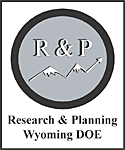Wyoming Employment Decreases by 18,200 Jobs in November
The Research & Planning section of the Wyoming Department of Employment has reported that the state's seasonally adjusted unemployment rate fell from 6.7% in October to 6.6% in November (not a statistically significant change). In contrast, the U.S. unemployment rate increased slightly from 9.6% in October to 9.8% in November. Modest job gains continued in November, as nonfarm employment increased by 2,800 jobs (1.0%) from a year earlier.
Over the year, Wyoming added 2,800 nonfarm jobs (1.0%). The largest job gains were seen in natural resources & mining (including oil & gas; 3,300 jobs, or 13.5%). Employment also increased in government (including public schools, colleges, and hospitals; 1,100 jobs, or 1.5%), transportation & utilities (600 jobs, or 4.5%), and wholesale trade (600 jobs, or 7.1%). Job losses occurred in retail trade (-1,500 jobs, or -4.9%), leisure & hospitality (-1,300 jobs, or -4.5%), construction (-600 jobs, or -2.5%), and professional & business services (-500 jobs, or -3.0%). Employment was unchanged from November 2009 in financial activities and other services.
From October to November, total nonfarm employment decreased by 4,700 jobs (-1.6%). This level of decrease is consistent with normal seasonal patterns. Job gains in natural resources & mining (500 jobs, or 1.8%) were more than offset by seasonal job losses in leisure & hospitality (-3,200 jobs, or -10.5%), construction (-700 jobs, or -2.9%), professional & business services (-600 jobs, or -3.5%), retail trade (-200 jobs, or -0.7%), and government (-200 jobs, or -0.3%).
Most county unemployment rates followed their normal seasonal pattern and increased slightly from October to November. Campbell County was the exception, where unemployment decreased from 4.9% in October to 4.8% in November. Teton County posted the highest unemployment rate in November (11.9%), followed by Lincoln County (8.3%) and Fremont and Johnson counties (both 7.1%).
1 Seasonal adjustment is a statistical procedure to remove the impact of normal regularly recurring events (such as weather, major holidays, and the opening and closing of schools) from economic time series in order to obtain a better understanding of changes in economic conditions from month to month.
